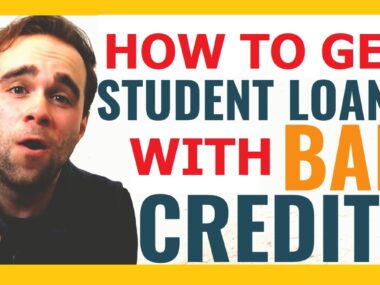Paying for college or graduate school can feel overwhelming, especially when you’re staring at five or six figures of tuition, books, and living costs. But if you’re smart about financing, you can reduce your long-term burden by choosing low interest student loans.
This comprehensive guide will walk you through the best low interest student loan options in 2025, including both federal and private lenders, key factors that affect your rates, tips to qualify for the lowest interest, and how to avoid common pitfalls.
What Are Low Interest Student Loans?
Low interest student loans are education loans offered by federal or private lenders that charge below-average rates compared to standard financing. These loans reduce the total cost of borrowing, helping you save thousands over the life of your loan.
Whether you’re an undergraduate, graduate, or parent borrower, finding a loan with a lower interest rate should be one of your top priorities.
Federal Low Interest Student Loans
Federal student loans are often the first stop for students—and for good reason. They typically offer lower fixed interest rates, flexible repayment options, and government protections.
Direct Subsidized Loans
- Interest Rate (2025): ~5.50% fixed
- Best For: Undergraduate students with financial need
- Benefits:
- Government pays interest while in school
- 6-month grace period
- Eligible for forgiveness and income-driven repayment
Direct Unsubsidized Loans
- Interest Rate (2025): ~7.05% fixed
- Best For: Undergraduate and graduate students (no need requirement)
- Benefits:
- Broad eligibility
- No credit check
- Flexible repayment plans
Direct PLUS Loans
- Interest Rate (2025): ~8.05% fixed
- Best For: Graduate students and parents of undergraduates
- Benefits:
- Covers full cost of attendance
- Federal repayment and deferment options
Note: PLUS Loans have higher interest rates. Consider them after maxing out subsidized and unsubsidized loans.
Best Private Lenders Offering Low Interest Student Loans
While federal loans are often the cheapest and safest, top-tier private lenders can offer competitive interest rates—especially for students with strong credit or a creditworthy cosigner.
Here are the best low interest private student loans in 2025:
SoFi
- APR Range: 4.49% – 11.99% (with autopay)
- Repayment Terms: 5–15 years
- Pros:
- No fees (application, origination, or late)
- Unemployment protection
- Career coaching
Earnest
- APR Range: 4.29% – 13.03%
- Unique Feature: Customize your monthly payment
- Pros:
- Skip a payment once per year
- Flexible repayment options
College Ave
- APR Range: 4.11% – 14.96%
- Pros:
- 5–15 year repayment terms
- Cosigner release after 24 payments
- No application or origination fees
Discover Student Loans
- APR Range: 4.99% – 13.99%
- Pros:
- 1% cash reward for good grades
- No fees of any kind
- Multi-year approval for eligible borrowers
Sallie Mae
- APR Range: 4.25% – 15.49%
- Pros:
- Variety of repayment options
- Free study resources and FICO Score access
Federal vs. Private Low Interest Student Loans Comparison
| Feature | Federal Loans | Private Loans |
| Interest Type | Fixed | Fixed or Variable |
| Rates Based On | Congress | Creditworthiness |
| Income-Driven Plans | ✅ Yes | ❌ No |
| Forgiveness Programs | ✅ Yes | ❌ No |
| Cosigner Needed | ❌ No | ✅ Often |
| Deferment Options | ✅ Yes | ✅ Limited |
| Max Loan Amount | Set by year | Up to full cost of attendance |
How to Qualify for Low Interest Rates
Whether federal or private, getting a low student loan rate requires preparation. Here’s how:
1. Maintain a Strong Credit Score
Lenders reward borrowers with 700+ credit scores with the best rates.
2. Apply with a Cosigner
A cosigner with excellent credit can dramatically lower your APR.
3. Compare Multiple Lenders
Use platforms like Credible or LendKey to compare real-time rates.
4. Opt for Shorter Repayment Terms
Shorter terms usually mean lower interest rates—though higher monthly payments.
5. Use Autopay
Most lenders give a 0.25% discount for enabling autopay.
Can You Refinance to Get a Lower Rate?
Yes! After graduation, refinancing your student loans can lower your rate if your credit score and income improve.
Benefits of Refinancing:
- Lower interest rate
- Combine multiple loans into one payment
- Change repayment term
- Remove a cosigner
Warning: Refinancing federal loans into private ones eliminates access to IDR plans and forgiveness.
Real Savings from Low Interest Rates
Consider the difference a few percentage points can make:
| Loan Amount | Interest Rate | 10-Year Term | Total Repayment |
| $40,000 | 5% | $424/month | $50,880 |
| $40,000 | 9% | $507/month | $60,840 |
Savings = $9,960 over 10 years, just from finding a lower rate!
Frequently Asked Questions (FAQ)
Q1: What is the lowest interest rate available on student loans in 2025?
Rates start around 4.11% with College Ave and Earnest for eligible borrowers.
Q2: Are federal student loans always better than private?
Not always. Federal loans offer protections, but private loans can offer lower rates to creditworthy applicants.
Q3: Can I refinance federal loans to get a lower rate?
Yes—but doing so converts them into private loans, making them ineligible for federal benefits.
Q4: Can graduate students get low interest loans?
Yes! Start with Direct Unsubsidized and Grad PLUS, then explore private graduate loan options.
Borrow Smart with Low Interest Loans
Student loans are an investment in your future—but they don’t need to cost a fortune. By focusing on low interest student loans, you reduce your total repayment burden, freeing your future income for what matters most.
Start with federal loans, compare private lenders, and refinance when your financial profile improves. Smart borrowers save more—and graduate with less debt.










